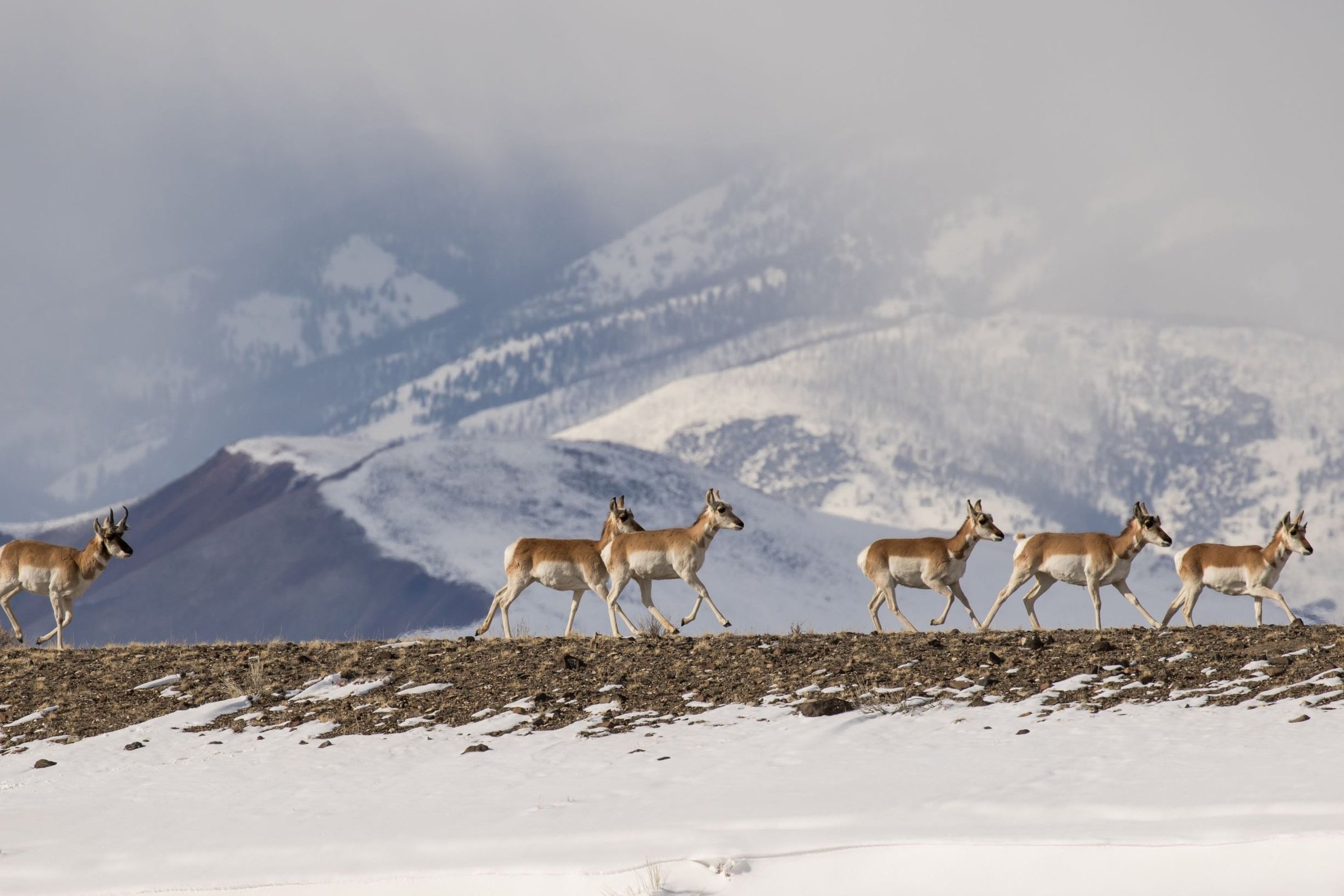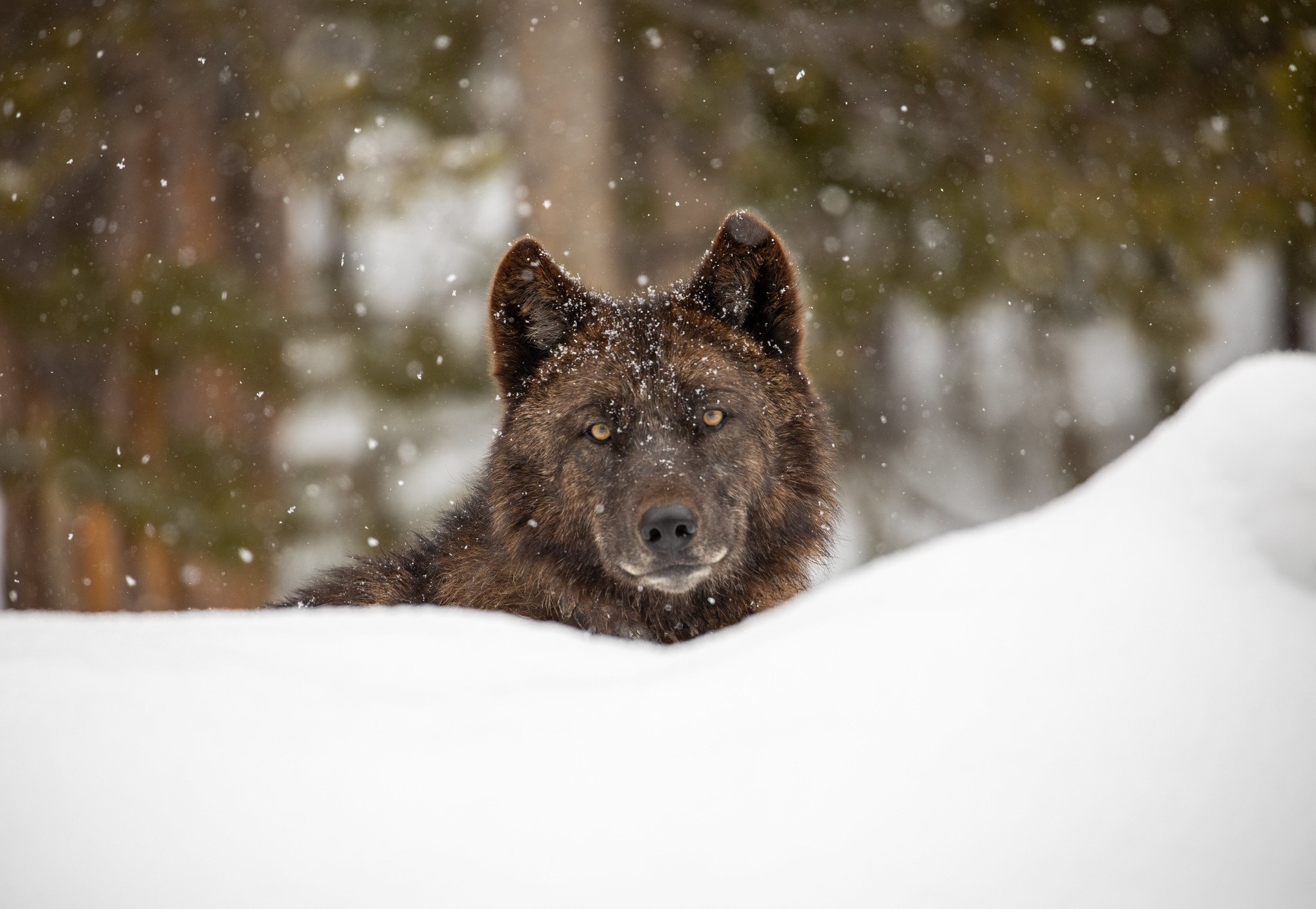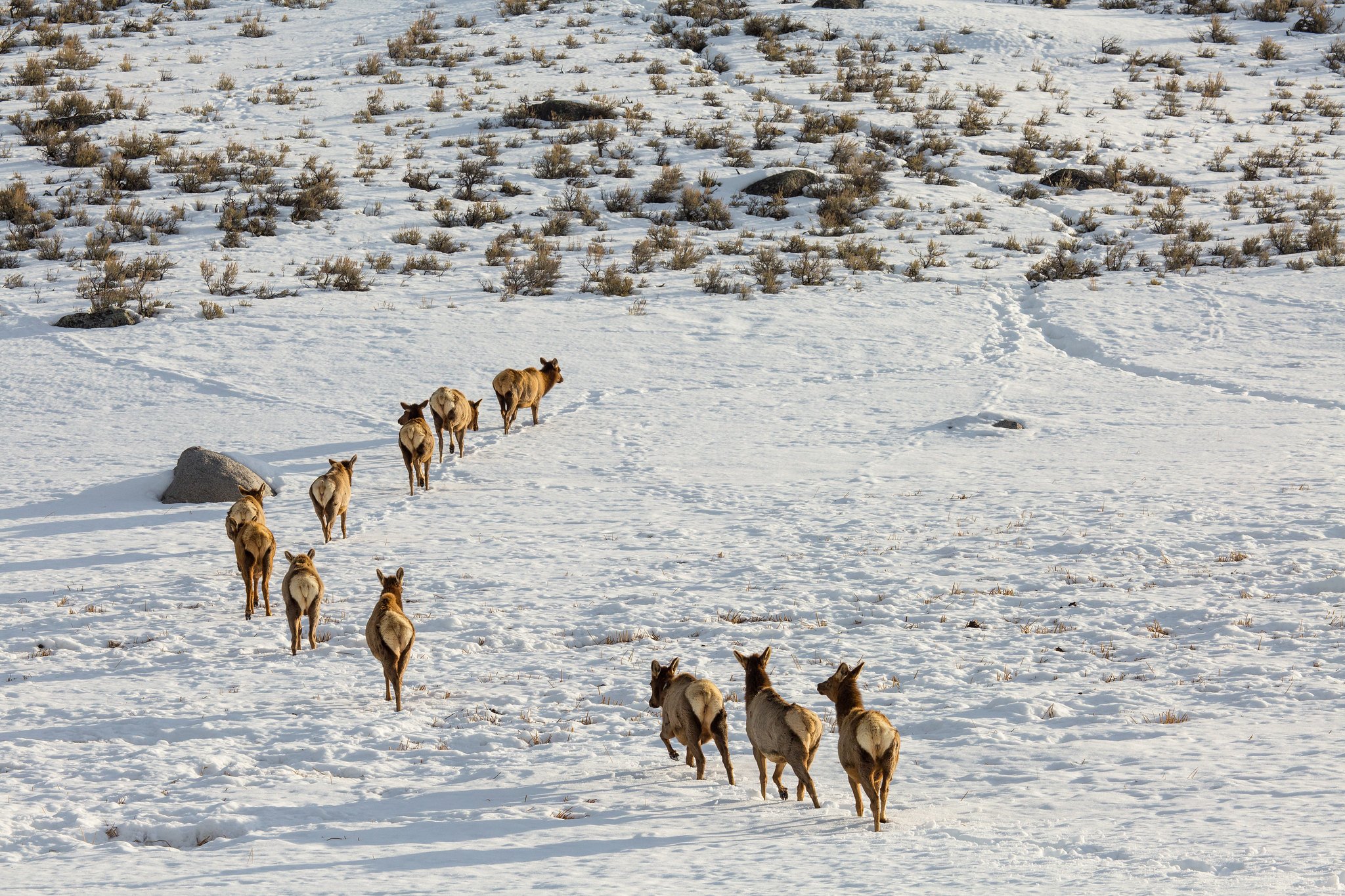Looking ahead at GYC’s exciting 2024
It’s completely absurd when you think about it. Engaging your child up in a sport that forces you to drive hundreds of miles across the treacherous roads of the Mountain West in winter. It’s also something I enjoy to the depths of my soul. From the moment our son hit the ice at five years old, he’s been hooked on hockey. It was cute in the early years, the little kids slowly tumbling across the ice, learning how to skate and use their stick, with limited travel. As he got older, it got real. Suddenly, we went from the occasional friendly tournament close to our home in Jackson, Wyoming in the heart of the Greater Yellowstone Ecosystem to driving across the West for his games nearly every weekend from November through March.
As you can imagine, this involves a lot of windshield time. And while some people complain about the long sometimes terrifying drives, it’s one of my favorite parts of the whole experience. In large part that’s because I have the honor of working as the director of conservation for the Greater Yellowstone Coalition and collaborating with our incredible team and wonderful folks of all kinds to protect the lands, waters, and wildlife of this special corner of the Earth. So, every time I hit the road, I can't stop thinking about how to make our work even more impactful and effective in every nook and cranny of Greater Yellowstone.
Take this weekend for example. My son Ryder and I hit the road for a two-day, 750-mile, 13 hours in the car round-trip, rapid-fire journey to Sheridan, Wyoming for two games. We hit the road on Saturday morning and headed north, Grand Teton National Park on our left, the National Elk Refuge on our right. Just a few miles north of town, two elk darted in front of my truck. Fortunately, I saw them in time and avoided a collision. This near miss took place at a well-known hotspot for wildlife-vehicle collisions, an issue GYC is working to address by supporting the construction of wildlife crossings across the ecosystem. In addition to reducing wildlife-vehicle collisions (often as much as 90 percent), wildlife crossings preserve wildlife migration and movement across the ecosystem.
Later in our drive, between Dubois, Wyoming, and Crowheart on the Wind River Indian Reservation we saw several dead mule deer and pronghorn on the side of the road who weren’t as fortunate as the elk I missed. One mule deer had a large bald eagle and an unkindness of ravens feasting on the carcass, which Ryder thought was gross. My colleagues at all six of our offices across Greater Yellowstone are immersed in projects from wildlife crossings to fence removal and modification to help wildlife freely roam across the landscape. This year, we expect to hit milestones in our work with Yellowstone Safe Passages in Paradise Valley, Montana, along Teton Pass in Idaho and Wyoming, and around Cody, Wyoming, to name a few.
How GYC is preserving wildlife migration and movement
As we continued north, we watched a cow and a calf moose graze in the sagebrush. With Grand Teton National Park and the Tetons shrouded in clouds to my left and Bridger-Teton National Forest lands to my right, I started to think about the upcoming revision to the Bridger-Teton National Forest (BTNF) Management Plan.
The BTNF contains some of the wildest and least developed areas in Greater Yellowstone, and faces challenges from increasing recreational pressure, human development, and the impacts of climate change. This plan will shape how this forest is managed for the next generation and GYC is collaborating with a large coalition of partners to ensure this plan protects wild lands, cold, clean water, and habitat in migration routes while promoting climate resiliency.
How GYC is protecting the Bridger-Teton National Forest
The road arced to the east and as we traversed the spectacular Buffalo Valley. I spotted a large canine moving rapidly through the snow on our right. Almost certainly a coyote, Ryder and I secretly hoped it was a wolf. This will be a big year for wolves in the GYE. In 2021, after some conservation groups petitioned the federal government to relist Northern Rockies wolves under the Endangered Species Act, the U.S. Fish and Wildlife Service initiated a status review of Northern Rockies wolves to determine whether this population should be listed. We expect a decision on this petition in early 2024.
At the state level in Montana, GYC is working to shape the new Montana Gray Wolf Managment Plan. GYC and our supporters submitted more than 2,000 comments to Montana Fish, Wildlife & Parks in support of better wolf management across the state. We expect to see a final wolf plan in late 2024.
How GYC is protecting wolves
We began ascending Togwotee Pass and my thoughts shifted to grizzly bears. I’ve seen too many bears to count while driving over this pass. Grizzlies are thick in this part of Greater Yellowstone and many are attracted to roadside vegetation. My brain returned to bears as we ascended Tensleep Canyon into the Bighorn Mountains. While the Bighorns are well outside Greater Yellowstone, there’s been rumors of grizzlies there for years, though no confirmed sightings. A bear was confirmed in the Pryor Mountains earlier this year, just north of the Bighorns.
This bear is a symbol of the remarkable comeback grizzlies have made over the last 40 years thanks to people working together to bring them back from the brink of extinction and help the population grow and expand into habitats where they haven’t been seen in almost a century.
Like wolves, 2024 will be a big year for bears in Greater Yellowstone. In February 2023, The U.S. Fish and Wildlife Service initiated a 12-month status review of grizzly bears in the Greater Yellowstone and Northern Continental Divide ecosystems to determine whether these populations should remain listed under the Endangered Species Act. We expect that sometime after the end of this status review period, the U.S. Fish and Wildlife Service will decide if delisting either or both grizzly populations is warranted. Regardless of the decision, GYC is committed to ensuring grizzly bears thrive long into the future. We will continue to protect core grizzly habitat, prevent human-bear conflicts, and advocate for policies that are good for grizzlies.
How GYC is protecting grizzlies
After descending Togwotee Pass and rolling through the spectacular town of Dubois, Wyoming, we entered the Wind River Indian Reservation (WRIR). Led by our three amazing staff in our Fort Washakie office, Wes Martel, Colleen Friday, and Signa McAdams, GYC is working within strategic partnerships and on Tribal-centered programs to honor Indigenous conservation priorities, advance Tribal rights, and return Indigenous ecosystem management practices to the landscape.
Part of this work is playing a leading role within the Water and Buffalo Alliance and working with the Wind River Tribal Buffalo Initiative to support their vision to restore 1,000 buffalo across 100,000 acres of the Wind River Indian Reservation. Ryder and I pulled over to view the Eastern Shoshone Tribal Buffalo Herd grazing a few hundred yards off the highway. “That’s really cool!” he exclaimed when I gave him the backstory of these buffalo coming home to Wind River. “Yeah bud.” I replied. “It’s really freaking cool.”
In this same pasture, we held an incredibly successful first Indigenous Youth Culture and Climate Camp in September 2023, and we expect to see a second iteration of the land-based education camp in summer 2024. Co-hosted by GYC on the Wind River Indian Reservation, the camp connects youth, Elders, and the land, elevates Indigenous-led conservation, and stewards the next generation of conservationists.
Experience the 2023 Indigenous Youth Culture & Climate Camp
As we exited the Wind River Canyon into the funky town of Thermopolis and dropped into the Bighorn Basin, my brain jumped to our fantastic staff person in Cody, Wyoming – Erin Welty – who is leading collaborative efforts regarding wildlife migration and grizzly bear conflict prevention. One issue Erin and a dozen of our colleagues are actively engaged in is the U.S. Department of Agriculture (USDA)-Wyoming Big Game Conservation Partnership.
The USDA recently expanded this partnership into Idaho and Montana through a historic $40 million investment and GYC is helping implement these funds. We’re excited to partner with folks in Idaho and Montana to expand our collaborative efforts to conserve big game migratory habitat across the region. The funds will go toward new conservation easements, a habitat leasing program, habitat restoration, and wildlife-friendly fencing projects across the ecosystem.
How the USDA Partnership is helping wildlife
Driving home from Sheridan on Sunday, I basked in pride having watched my son’s team win two games and my son score two goals. I also thought about how much fun my wife Stacy will have watching him play in Bozeman next weekend. And because it’s literally my job to think about it, my thoughts on the drive shifted to the conservation issues facing the landscapes Stacy and Ryder will journey through next weekend and our work in these places in 2024.
Top of mind for me and GYC is stopping the Kilgore Gold Exploration Project. The project site sits just west of next weekend’s drive through eastern Idaho, only 40 miles west of Yellowstone National Park at the headwaters of the Snake River Aquifer. After two rounds in court, the five-year Kilgore Gold Exploration Project was approved in summer 2023. The decision allows a foreign mining company to proceed with exploratory drilling that puts an important area for grizzly bears, other wildlife, rural character, and water quality of the foothills of Idaho’s Centennial Mountains and all those downstream at serious risk.
In 2024, GYC is pursuing all available means to stop the project and protect this remote and remarkable corner of the Greater Yellowstone Ecosystem from toxic, destructive gold mining.
How GYC is working to halt the Kilgore Project
After crossing the Island Park Caldera and going over Targhee Pass they’ll drop into West Yellowstone, Montana and Hebgen Basin, an area important for bison migrating out of Yellowstone National Park. Yellowstone National Park is updating its Yellowstone Bison Management Plan – a plan that will shape bison management in our ecosystem for years to come. GYC and our supporters have submitted comments on the draft plan, and we expect to see a final Environmental Impact Statement for the Yellowstone Bison Management Plan in the summer of 2024. In the meantime, GYC is advocating for science-based solutions and supporting a plan that reflects the fact that 74 percent of Montanans want bison managed as wildlife, not livestock.
How GYC is protecting bison
If I was driving with them along the Gallatin River into Bozeman, I’m sure I’d be thinking about the Montana Headwaters Legacy Act. Working with GYC and our partners, Senator Jon Tester (D-MT) reintroduced the Montana Headwaters Legacy Act (MHLA) in November 2023. This legislation would protect 384 river miles across 20 rivers, including the Gallatin River and many others located within the Greater Yellowstone Ecosystem. We now have until the end of the 118th Congressional session in December 2024 to move the MHLA through Congress and onto President Biden’s desk, and we’ll need your help to get it there.
Montanans: Take action for the Montana Headwaters Legacy Act
There are big things in store for GYC – and the lands, waters, and wildlife of Greater Yellowstone – in 2024. We hope you’ll follow along.
To stay up to date with these pivotal moments and learn about opportunities to speak up on key issues, sign up for our emails. Or consider joining me on a hockey road trip. They’re a blast and we’d have tons to talk about driving across this incredible place.
Our work is made possible by generous supporters like you. Consider making a gift today to help us reach these 2024 milestones.
Thank you for your continued support. We couldn’t do this work without you.
—Craig Benjamin, Director of Conservation
P.S. Go Jackson Moose Youth Hockey!!!
Director of Conservation Craig Benjamin and his son Ryder on an adventure in Greater Yellowstone. (Photo Craig Benjamin)











